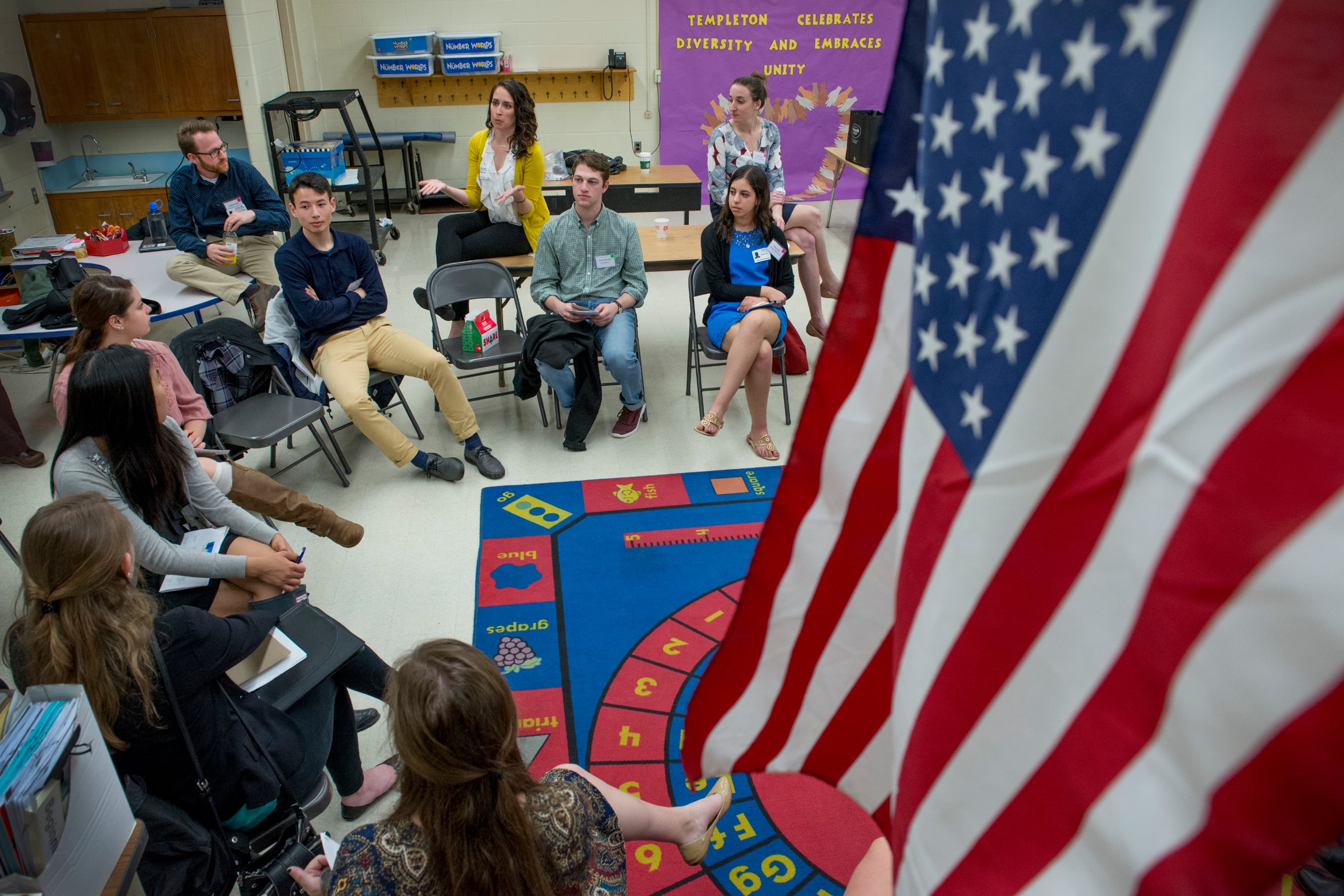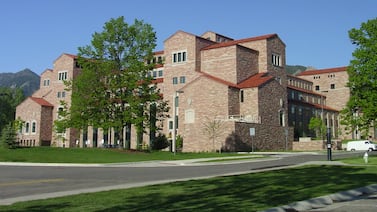Teach For America, once a centerpiece of the nation’s impassioned education reform debates, will cut more than a quarter of its staff by June.
The organization will reduce its staff by roughly 400 positions, according to a video shared with staff in mid-December. Officials this week acknowledged the internal shakeup, which comes after TFA’s 2022 cohort was its smallest crop of first-year teachers in more than a decade.
The organization projects its incoming cohort will be larger, and says it will focus more attention on supporting its alumni and on other programs, like a virtual tutoring fellowship. But the layoffs are a sign that the organization is on uncertain footing, occurring while TFA no longer places new recruits in 13 of the 51 communities it served a few years ago — like San Diego, where the organization now focuses on “alumni innovation.”
“We have to transform — all of us do,” CEO Elisa Villanueva Beard told Chalkbeat. “It’s hard, but we have to position ourselves to have the greatest impact for our kids. Period. End of sentence.”
Spokesperson Erin Bradley said the organization would have a “smaller and more agile team of about 1,000 staff by summer.”
The need for teachers is especially high, as schools across the nation continue to recover from the sweeping effects of the pandemic, and demand for TFA’s services hasn’t faded. But drivers of that demand have also appeared to disrupt TFA’s recruitment efforts in recent years, said Melissa Arnold Lyon, an assistant professor at the Rockefeller College of Public Affairs and Policy.
“Right at the moment where districts are facing considerable staffing challenges in a very tight labor market, you might think a recruitment and training organization that helps districts fill hard-to-fill spots would be particularly useful,” she said. “But instead of TFA coming in and helping districts with these staffing challenges, TFA is shrinking.”
The reorganization will allow the company to lean more heavily into being a “full talent partner to our districts and schools,” Beard said, connecting alumni with jobs.
Teach for America has garnered staunch supporters and fierce critics since its founding in 1989. Its opponents say its structure — a relatively short training program paired with a two-year commitment — is inadequate. By relying on its recruits’ ambition and idealism instead of preparation, TFA contributes to high-needs students experiencing a revolving door of educators, critics say.
Its allies have lauded it as an innovative program that supplies school districts that struggle to fill roles with teachers, many of whom might not have considered becoming an educator otherwise. A number of studies have shown its teachers make a positive academic impact, though researchers have also pointed to high turnover rates.
The organization has diversified over the last decade, and says about half of its educators placed since 2014 are people of color.
It has also shrunk from its recent peak in the wake of the Great Recession, when a weak job market pushed TFA applications up. In 2013, the organization received roughly 57,000 applications and placed nearly 6,000 new recruits in schools.
Over time, that figure has steadily dropped. By 2022, new corps members had fallen to less than a third of that number.
TFA is not alone in finding it difficult to recruit. Traditional teacher preparation programs are also seeing numbers fall, and there is growing evidence that interest in becoming a teacher in the U.S. has diminished. Meanwhile, the pandemic has further complicated recruitment efforts.
But this year, the organization has seen some positive signs in recruitment.
This week, TFA’s president and chief operating officer Jemina Bernard told staff the organization had “a real shot of having about 2,000 incoming 2023 corps members this year” — a 25% increase from the number of teachers it ended up placing in 2022. Applications are also up 30% this year, Beard said.
The organization also pointed to its Ignite Fellowship, a virtual program pairing undergraduate tutors with schools, as another example of growing recruitment momentum. That program saw a 100% increase in its second year, sending 1,500 new undergraduate tutors into 74 schools, Bradley said.
And TFA is still attracting interest from major philanthropists like MacKenzie Scott, who recently donated $25 million, and Oprah Winfrey, who donated $1 million.
But public audits and financial reports show some signs that TFA has faced financial difficulties. In the last fiscal year, the nonprofit reported more than $274 million in operating expenses but only about $197 million in revenue. Its endowment and investments have also dropped steeply in value in recent years, which Beard attributed to being sensitive to the stock market.
TFA asserted it remains “a financially strong and healthy organization,” pointing to its endowment balance of roughly $200 million and an additional more than $200 million in cash and operating reserves.
In addressing staff this week, Bernard acknowledged that the organization would need to ensure “that what we spend and what we raise are completely aligned” in the coming fiscal year.
The recent layoffs are not the first time the organization has eliminated positions. In the 2021 fiscal year, TFA spent about $4.4 million on severance payments and related expenses as a result of a “strategic reorganization,” according to its most recent fiscal audit. Layoffs also occurred in 2016.
To Jack Schneider, a professor of education at University of Massachusetts Lowell, TFA’s meteoric rise — and its outsized role in debates about how to improve schools — came in part thanks to it embodying reform philosophies of the 1990s and 2000s. But as education politics change, and as schools seek to help students recover from the pandemic, debates about staffing feel beside the point, he said.
“Right now, the fight is between people who want to totally privatize education … and people who are fighting for the existence of public education,” Schneider said. “TFA in that context feels like rearranging deck chairs on the Titanic.”
Now, some districts that once relied heavily on TFA have turned to other means of recruiting teachers.
One rural county in eastern North Carolina, for example, leaned on TFA recruits to make up about 20% of its teaching staff in 2015, according to a New York Times report. Today, Warren County Schools Superintendent Keith Sutton isn’t sure they have a single member still in the district. He’d welcome more, but has been told they aren’t available.
“If I can get a few years out of a recruit, I’m happy to get it,” he said. “It’s much more difficult for me to recruit high-quality candidates to a small rural community that doesn’t have the lights and the glitz and the glamor that a Raleigh, or a Durham, or a Charlotte does.”
Three TFA teachers left at the end of the last school year, but the district hasn’t been able to replace them, Sutton said. The district has partnered with historically Black colleges and universities and other universities, as well as other teacher training and international teaching programs, to diversify its recruitment efforts, he added.
“I don’t think we would ever find ourselves in the place we were before, where we were that reliant on TFA,” Sutton said. “But I would like to see it be more of an option for us.”
Correction: This story was updated to remove a reference to TFA’s Austin region.
Patrick Wall contributed reporting.
Julian Shen-Berro is a reporter covering national issues. Contact him at jshen-berro@chalkbeat.org.






